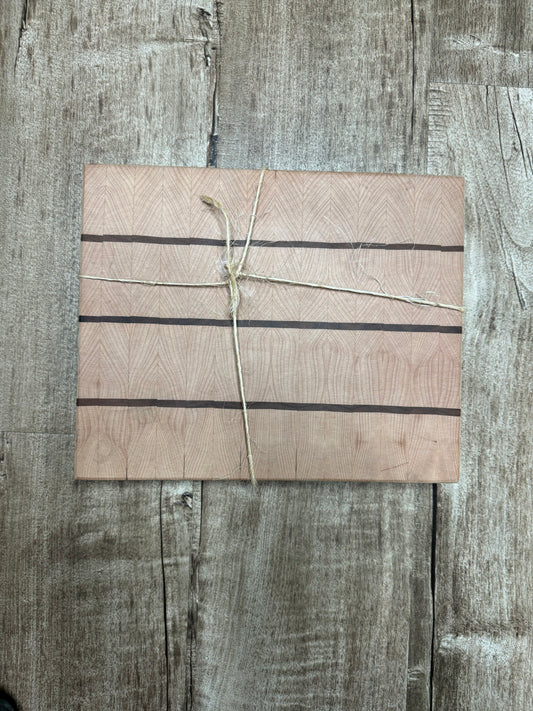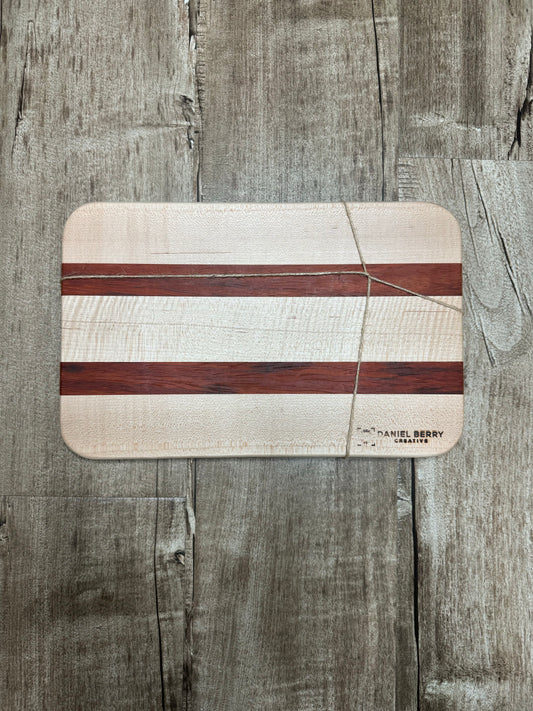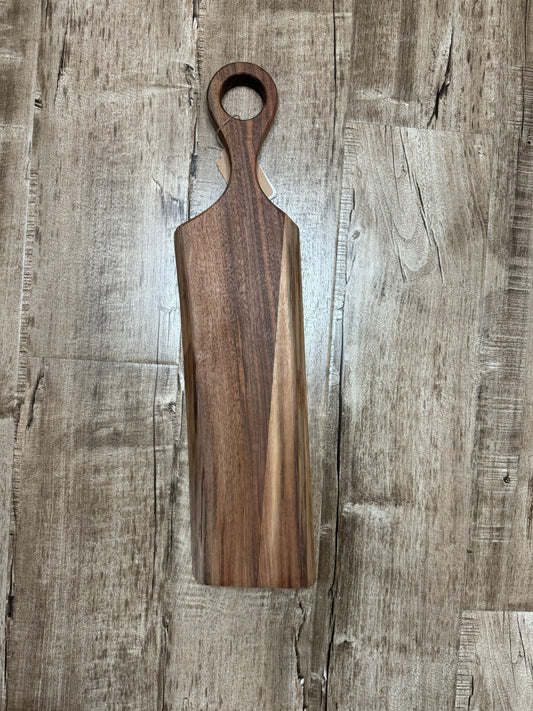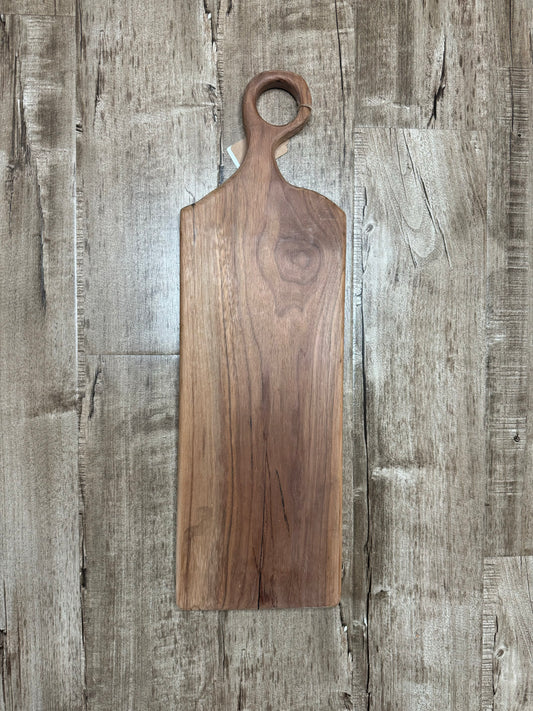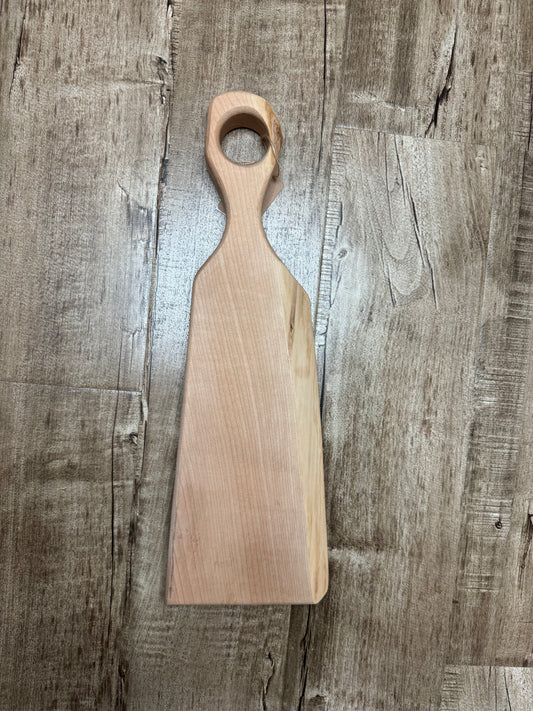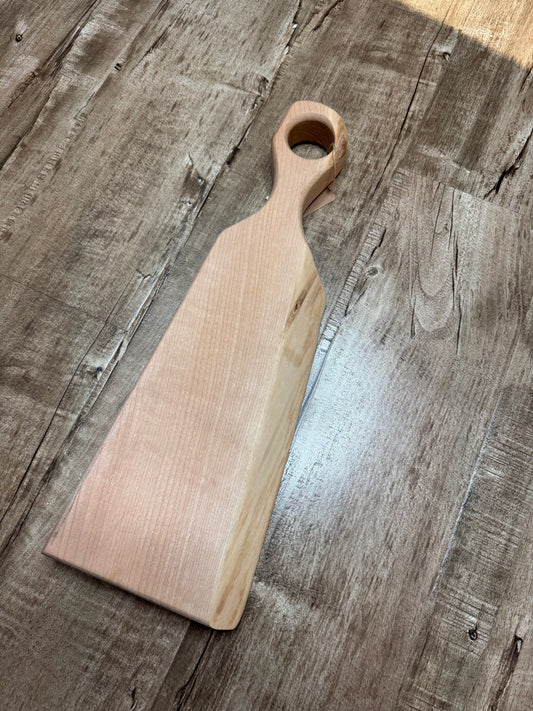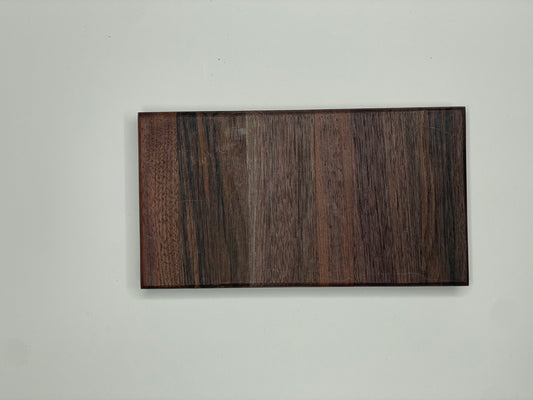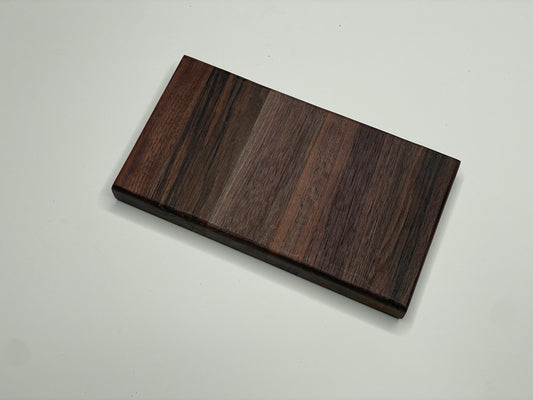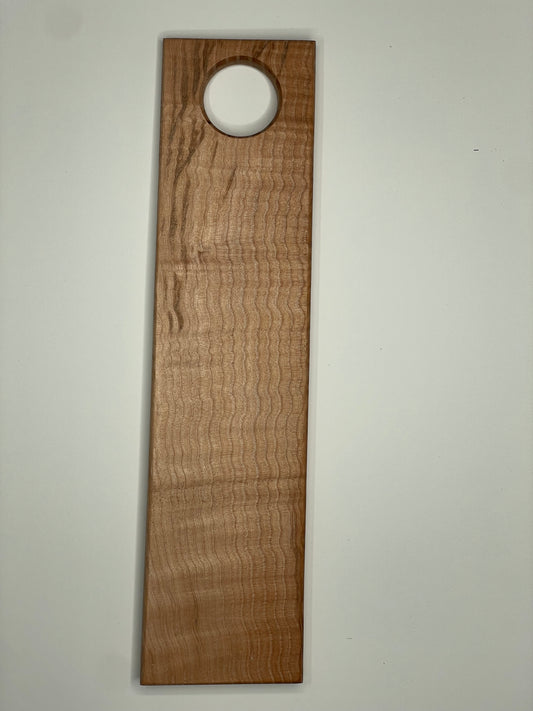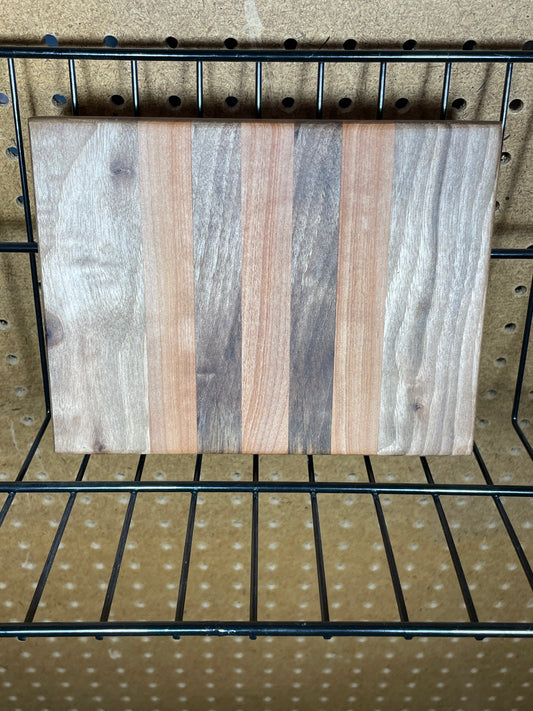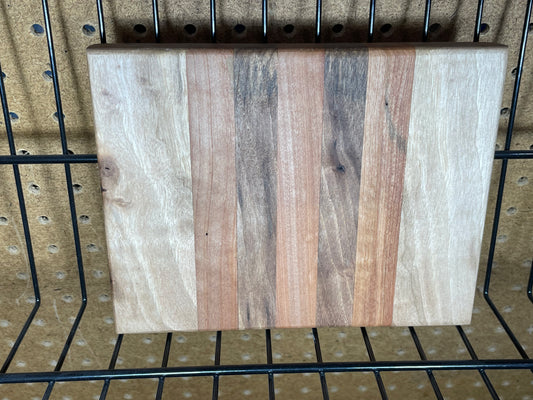Cutting Boards
Collection: Cutting/Charcuterie Boards
All Boards finished with food safe Walrus Oil.
Why do you need a live edge Charcuterie Board?A live edge wooden charcuterie board offers a distinct and visually appealing way to present and serve a variety of foods, particularly cheeses, cured meats, fruits, nuts, and other appetizers. The "live edge" refers to the natural, irregular edge of the wood, which has not been precisely cut or shaped, retaining the organic and rustic appearance of the original tree.
Here are some reasons why you might consider using a live edge wooden charcuterie board:
|
Why do you need a wooden cutting board?A wooden cutting board is a versatile and essential tool in any kitchen, renowned for its unique blend of functionality, aesthetics, and practicality. Crafted from various types of wood such as maple, walnut, cherry, or bamboo, these boards offer several advantages that make them a preferred choice for both professional chefs and home cooks alike.
|
| 1. Aesthetic Appeal: The live edge of the wooden board adds a touch of natural elegance and uniqueness to your presentation. The irregular shapes and patterns of the edge evoke a sense of authenticity and connection to the outdoors, enhancing the overall visual appeal of the food display. | 1. Gentle on Knife Blades: Wooden cutting boards have a natural ability to absorb the impact of knife blades, resulting in less wear and tear on your knives. Unlike harder surfaces like glass or stone, wooden boards won't dull or damage your knives as quickly, helping to prolong their sharpness and lifespan. |
| 2. Rustic Charm: Live edge boards have a distinct rustic charm that adds character to any gathering or event. The organic and imperfect look of the edge creates a cozy and welcoming atmosphere, which is perfect for casual get-togethers or formal occasions. | 2. Self-Healing Properties: One of the most distinctive features of wooden cutting boards is their self-healing properties. The natural fibers in wood have a tendency to close up after knife cuts, reducing the chances of deep grooves forming on the surface. This characteristic contributes to a smoother and more even cutting experience over time. |
| 3. Conversation Starter: The unique design and appearance of a live edge charcuterie board often serve as a conversation starter. Guests are likely to notice and appreciate the natural beauty of the wood, leading to discussions about the board's origin, craftsmanship, and the culinary delights it holds. | 3. Antibacterial Properties: Contrary to a common misconception, wood has natural antibacterial properties that help inhibit the growth of harmful microorganisms on its surface. The wood's porous structure draws moisture away from the surface, making it difficult for bacteria to thrive. Regular cleaning and maintenance can further ensure the board's cleanliness. |
| 4. Versatility: Live edge charcuterie boards come in various shapes, sizes, and wood types, offering a wide range of options to suit different occasions and preferences. You can find boards with lighter or darker wood, various grains, and even boards made from exotic woods for a truly distinctive look. | 4. Attractive Appearance: Wooden cutting boards add an element of warmth and charm to your kitchen space. The natural grain patterns and rich colors of different wood types create an aesthetic appeal that complements various kitchen decor styles. They can even double as serving platters for bread, cheeses, or charcuterie, enhancing the presentation of your dishes. |
| 5. Enhanced Food Presentation: The live edge of the board can accentuate the presentation of the food items placed on it. The juxtaposition of the organic, uneven edge against the neatly arranged food items creates a visually appealing contrast that makes the food stand out. | 5. Durability and Longevity: When properly cared for, wooden cutting boards can last for years. Regular oiling and conditioning can help prevent cracks and splits, preserving the board's structural integrity. This longevity makes them a cost-effective choice over time, compared to disposable plastic cutting boards. |
| 6. Customizable: Each live edge board is unique, and woodworkers often leave some of the natural features of the wood, such as knots, burls, and grain patterns, intact. This makes each board a work of art, and you can even have one custom-made to your specifications for a truly personalized touch. | 6. Reduced Noise: Chopping and slicing on a wooden cutting board create less noise compared to other harder surfaces, providing a quieter and more pleasant cooking environment. |
| 7. Natural Connection: Using a live edge wooden board establishes a connection with nature and natural materials. This can resonate with those who appreciate environmentally friendly choices and seek to incorporate more organic elements into their lifestyle. | 7. Versatility: Wooden cutting boards are suitable for a wide range of cutting tasks, from slicing vegetables to carving meats. Their sturdy yet forgiving surface is perfect for various types of kitchen work. |
| 8. Longevity: Just like other wooden cutting boards, a well-maintained live edge charcuterie board can last for years, becoming a cherished part of your culinary traditions and entertaining events. | 8. Environmentally Friendly: Bamboo cutting boards, a popular type of wooden board, are particularly environmentally friendly due to bamboo's rapid growth and renewability. Wood is also biodegradable, making it a more sustainable option compared to plastic alternatives. |
|
|
9. Natural Patina: With regular use and proper care, wooden cutting boards develop a beautiful patina over time. This patina reflects the history of your culinary endeavors and contributes to the board's character. |
|
In summary, a live edge wooden charcuterie board goes beyond functionality by adding a touch of artistic flair and rustic charm to your food presentation. Its unique appearance and versatility make it a standout choice for creating memorable and visually pleasing displays that engage guests and elevate the dining experience. |
In summary, wooden cutting boards offer a combination of practical benefits, aesthetic appeal, and sustainability that make them an excellent choice for everyday kitchen use. Their ability to protect knife blades, inhibit bacterial growth, and develop a unique patina over time adds to their appeal, making them an indispensable tool for any cook who values both functionality and style in their kitchen. |
-
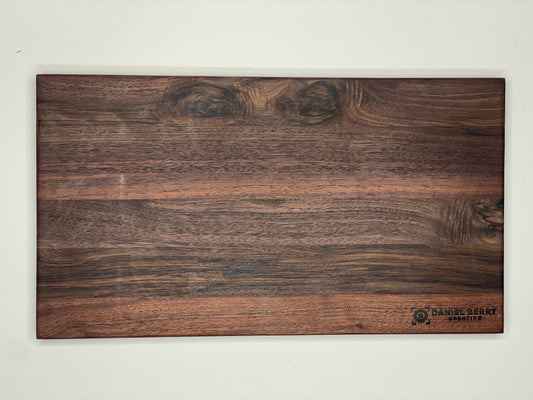
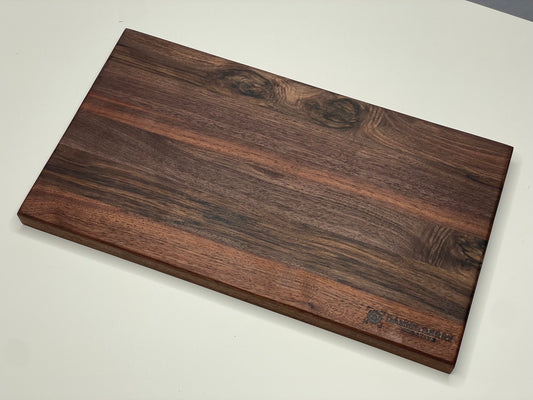 Sold out
Sold outWalnut cutting board
Regular price $60.00Regular priceUnit price / per$85.00Sale price $60.00Sold out -
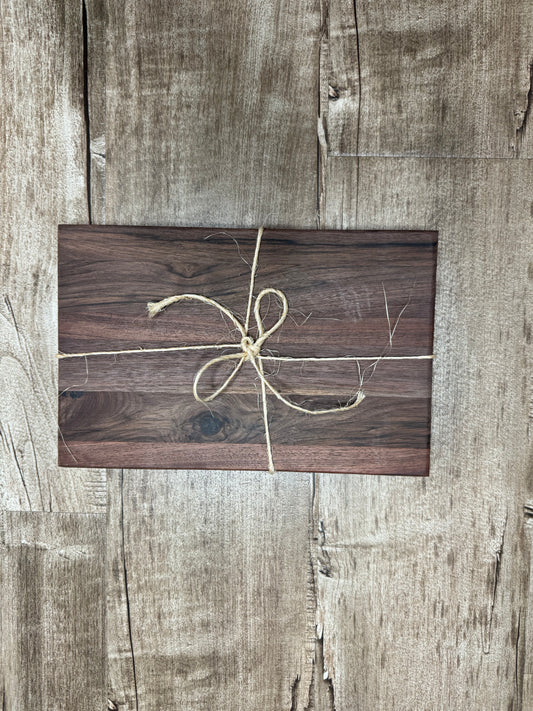 Sale
SaleWalnut Cutting Board
Regular price $45.00Regular priceUnit price / per$65.00Sale price $45.00Sale -
Maple/walnut endgrain Cutting board
Regular price $70.00Regular priceUnit price / per$100.00Sale price $70.00Sale -
Maple/Padauk cutting board
Regular price $50.00Regular priceUnit price / per$75.00Sale price $50.00Sale -
Walnut charcuterie/cutting board
Regular price $45.00Regular priceUnit price / per$75.00Sale price $45.00Sale -
Walnut charcuterie/cutting board
Regular price $75.00Regular priceUnit price / per$100.00Sale price $75.00Sale -
Maple cutting/charcuterie board
Regular price $50.00Regular priceUnit price / per$75.00Sale price $50.00Sale -
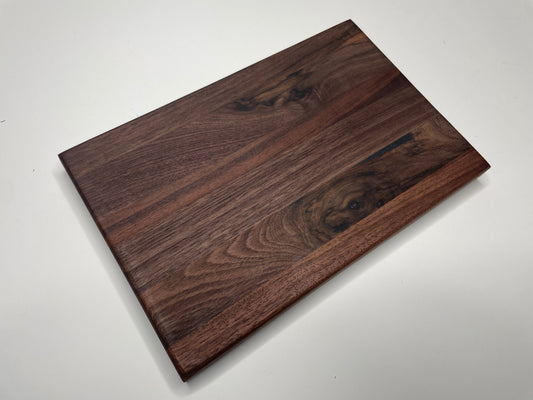
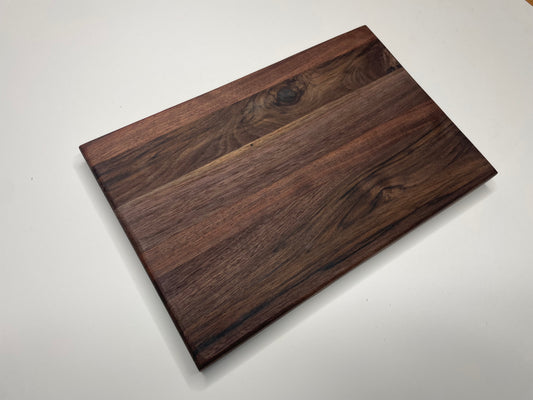 Sale
SaleWalnut cutting board
Regular price $40.00Regular priceUnit price / per$75.00Sale price $40.00Sale -
Walnut cheese cutting board
Regular price $20.00Regular priceUnit price / per$40.00Sale price $20.00Sale -
Curly Maple cutting/charcuterie board
Regular price $65.00Regular priceUnit price / per$80.00Sale price $65.00Sale -
Walnut/Madrone cheese/butter/cutting board
Regular price $35.00Regular priceUnit price / per




